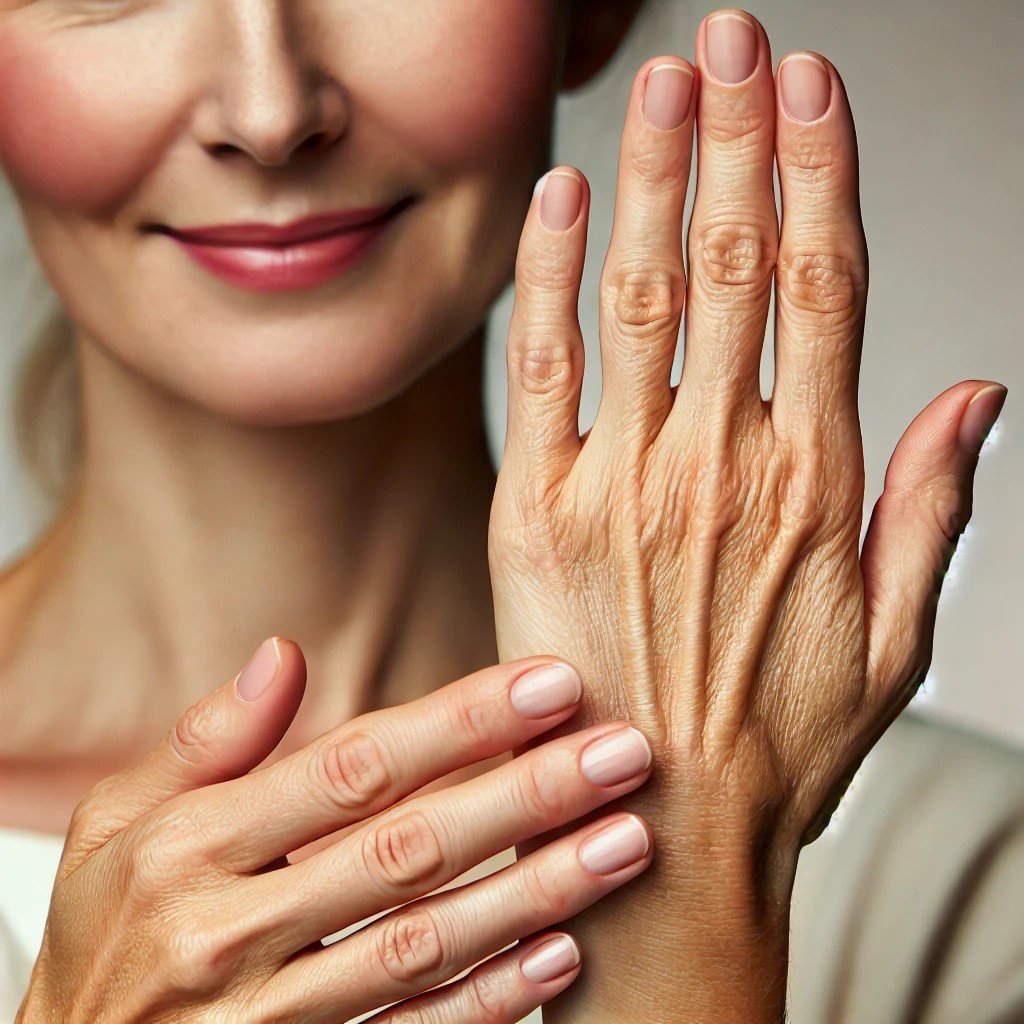How to Treat Dark Spots on the Hands: A Guide for Women Over 40
Dark Spots on the Hands: Understanding and Managing Them After 40
As we age, our bodies go through various changes, and one common concern for women over 40 is the appearance of dark spots on the hands. These spots, also known as age spots or liver spots, can be a source of frustration. As a beauty therapist and nutritional therapist, I understand how these changes can affect our confidence and well-being. In this blog post, we will explore why dark spots appear and what you can do to manage them.
Causes of Dark Spots on Hands
Dark spots on the hands are primarily caused by several factors, including:
Overactive Pigment Cells: Overactive pigment cells, known as melanocytes, result in excess generation of melanin, leading to dark spots or regions of hyperpigmentation. Harmful UV light or rays tend to increase the generation of melanin.
Prolonged Sun Exposure: When melanin is clumped or generated in high amounts, dark spots can become visible on the skin. Regions of skin that have received prolonged exposure to sunrays are more likely to develop them, commonly seen on sun-exposed areas such as shoulders, hands, and face.
Tanning Beds: The use of tanning beds or tanning lamps is counted amongst the other fundamental causes of dark spots on hands requiring treatment.
Hormonal Changes: Hormonal changes or imbalances, particularly during menopause, are also attributed to this skin condition. Decreasing oestrogen levels can make the skin more susceptible to UV damage, leading to more pronounced age spots.
Certain Medications: Some medications are more likely to cause hyperpigmentation as a side effect.
Skin Inflammation: Skin inflammation resulting from injury, bruises, acne, or other conditions is also accountable for this skin condition. Dark spots may remain after a wound, such as an insect bite, cut, or burn, has healed.
Harsh Cosmetics: Certain cosmetics or skin and hair products containing harsh chemicals tend to irritate the skin on the hands, leading to the appearance of spots.
Diabetes: Diabetes can cause certain skin areas to turn darker, resulting in dark spots on the hands, face, legs, or other regions.
Light Skin Tone: Having a light skin tone or a history of sunburn episodes increases the chance and risk of getting liver spots on the hands.
Menopause and Dark Spots
Menopause brings about significant hormonal changes that can impact the skin. Decreased oestrogen levels can lead to thinner skin and reduced collagen production, making the skin more vulnerable to sun damage and dark spots. Additionally, the skin's natural repair mechanisms slow down during menopause, leading to more pronounced and persistent dark spots.
Effective Strategies to Manage Dark Spots
The good news is that there are several strategies you can implement to manage and reduce the appearance of dark spots on your hands. Here are some practical tips:
1. Sun Protection:
The most effective way to prevent and manage dark spots is by protecting your skin from UV damage. Use a broad-spectrum sunscreen with at least SPF 30 every day, even on cloudy days. Wearing gloves while driving or during prolonged sun exposure can also be beneficial.
2. Topical Treatments:
There are various over-the-counter creams and serums that contain ingredients like vitamin C, retinol, and alpha hydroxy acids (AHAs). These ingredients help to lighten dark spots and promote cell turnover. Prescription creams with hydroquinone can also be effective but should be used under the guidance of a dermatologist.
3. Professional Treatments:
Visiting a beauty therapist for treatments such as chemical peels, laser therapy, or microdermabrasion can significantly reduce the appearance of dark spots. These treatments work by removing the top layer of skin, encouraging new, spot-free skin to emerge.
4. Nutritional Support:
As a nutritional therapist, I advocate for a diet rich in antioxidants, which can help protect your skin from further damage. Foods high in vitamins C and E, such as berries, nuts, and leafy greens, support skin health. Staying hydrated and avoiding excessive sugar and processed foods also contributes to healthier skin.
5. Lifestyle Adjustments:
Incorporating habits like wearing protective clothing and seeking shade during peak sun hours can make a significant difference. Additionally, managing stress through techniques like yoga, meditation, and regular exercise can improve overall skin health.
Embracing Healthy Skin Over 40
Navigating skin changes during midlife and menopause can be challenging, but understanding why they occur and how to address them empowers you to take control of your skin health. Remember, consistency is key. Protect your skin daily, nourish it with the right nutrients, and consider professional treatments if necessary.
By following these guidelines, you can reduce the appearance of dark spots and maintain healthy, glowing skin. If you have any concerns or need personalised advice, feel free to reach out. As a beauty therapist and nutritional therapist, I’m here to support you on your journey to feeling and looking your best.
By adhering to these tips and seeking professional guidance when needed, you can effectively manage dark spots on your hands and enjoy healthier, more vibrant skin.
Sign up for my weekly Health Bite for more tips and advice on maintaining healthy skin and overall well-being. Sign below







